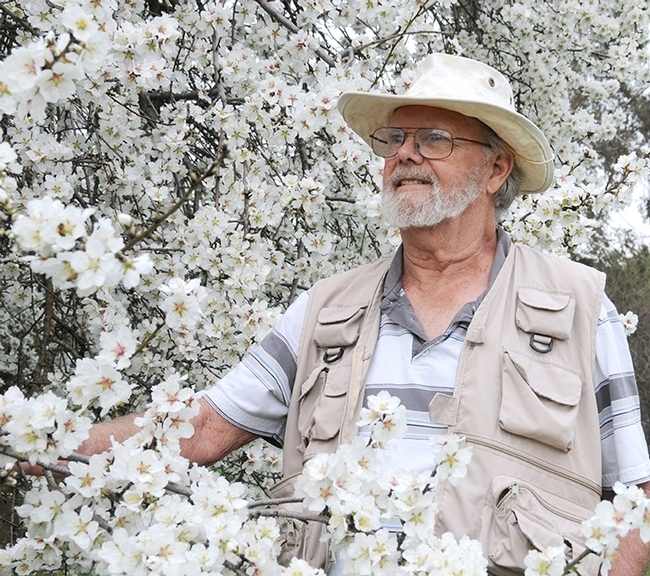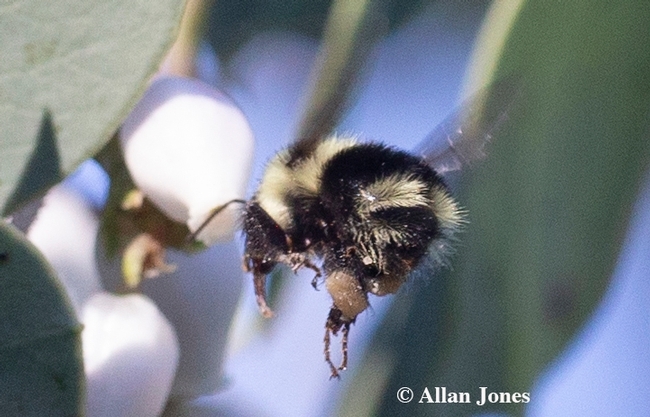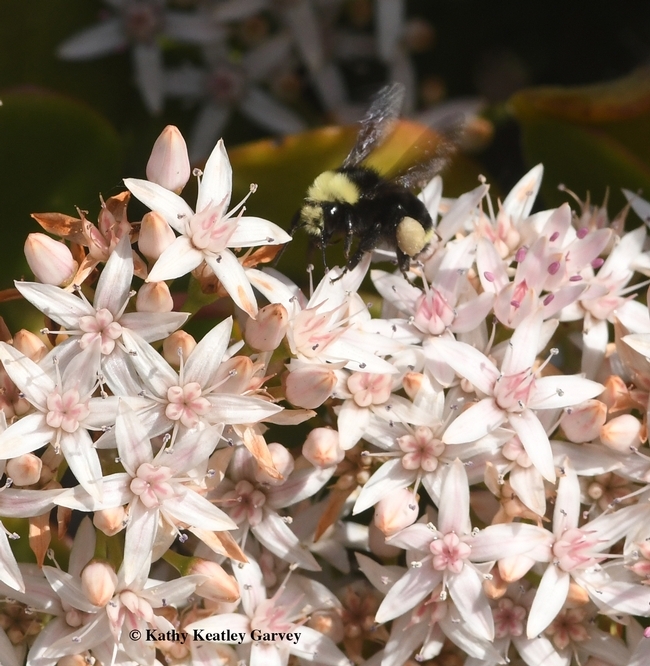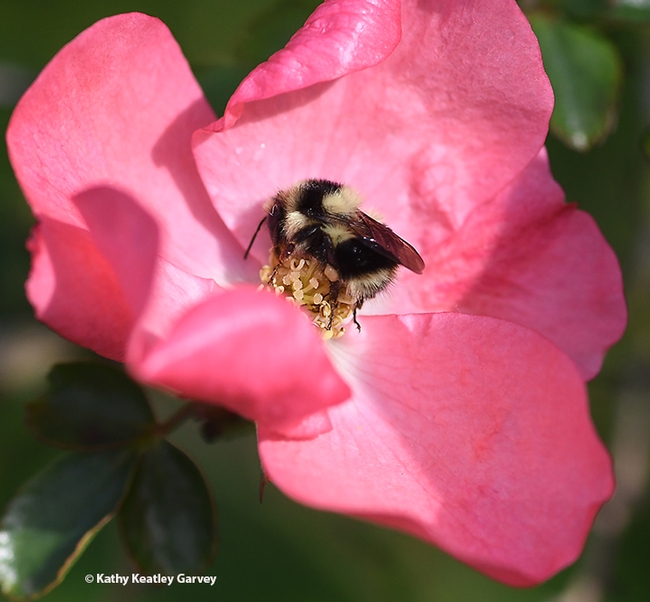
If so, and if you photograph the first one of the year, you might win the Bohart Museum of Entomology's contest.
In memory of native pollinator specialist Robbin Thorp (1933-2019), UC Davis distinguished emeritus professor of entomology, the Bohart Museum is sponsoring the inaugural Robbin Thorp Memorial First-Bumble-Bee-of-the-Year Contest.
Professor Thorp, 85, who died June 7, 2019, was a global authority on bumble bees, and always looked forward to seeing the first bumble bee of the year. He launched an impromptu contest several years ago with a small group of bumble bee enthusiasts/photographers from Yolo and Solano counties.
Now the Bohart Museum, where Thorp spent much of his time identifying bees and helping others, is sponsoring the contest. Participants are to capture an image of a bumble bee in the wild in either Yolo or Solano counties and email the image to bmuseum@ucdavis.edu, with the details of time, date and place. The image must be recognizable as a bumble bee. The winner receives bragging rights and a special gift from the Bohart Museum, said Lynn Kimsey, director of the Bohart and UC Davis professor of entomology. Plans call for a Bohart coffee mug with a bumble bee image.
The first bumble bee to emerge in this area is the black-tailed bumble bee, Bombus melanopygus. Native to western North America and found from California to British Columbia and as far east as Idaho, it forages on manzanitas, wild lilacs, wild buckwheats, lupines, penstemons, clovers, and sages, among others.
Thorp, a 30-year member of the UC Davis entomology faculty, from 1964-1994, co-authored two books, Bumble Bees of North America: An Identification Guide (Princeton University, 2014) and California Bees and Blooms: A Guide for Gardeners and Naturalists (Heyday, 2014). He achieved emeritus status in 1994 but continued to engage in research, teaching and public service until a few weeks before his death.
A tireless advocate of pollinator species protection and conservation, he was known for his expertise, dedication and passion in protecting native pollinators, especially bumble bees, and for his teaching, research and public service. He was an authority on pollination ecology, ecology and systematics of honey bees, bumble bees, vernal pool bees, conservation of bees, native bees and crop pollination, and bees of urban gardens and agricultural landscapes.
Thorp co-taught The Bee Course from 2002 to 2019, an intensive nine-day workshop affiliated with the American Museum of Natural History and held annually at the Southwestern Research Station, Portal, Ariz.
Kimsey, who first met Thorp when she was a graduate student at UC Davis, said that although he wasn't her major professor, “my project was on bees and he was incredibly helpful and supportive. His enthusiasm about pollinators and bees in particular actually grew after he retired, and he continued helping students and researchers and was the backbone of so much research. His support and kindness was matched by his undemanding assistance and expertise. What a terrible loss to his family and to the research and conservation communities."
An authority on the critically imperiled Franklin's bumble bee, Bombus franklini, Thorp began monitoring the bumble bee population in 1998 in its narrow distribution range of southern Oregon and northern California. He had not seen it since 2006 and was instrumental in placing Franklin's bumble bee on the Red List of Threatened Species of the International Union for Conservation of Nature and Natural Resources (IUCN). Long active in the North America IUCN Bumblebee Specialist Group, Thorp served as its regional co-chair, beginning in 2011.
In August of 2016 a documentary crew from CNN, headed by John Sutter, followed Thorp to a meadow where he last saw Franklin's bumble bee. Sutter wrote about Dr. Thorp, then 82, in a piece he titled "The Old Man and the Bee," aspinoff of Ernest Hemingway's "The Old Man and the Sea." (See "Will Franklin's Bumble Bee Ever Be Seen Again?"on YouTube by EarthFixMedia.)
Highly honored by his peers, Thorp was named a fellow of the California Academy of Sciences, San Francisco in 1986; recipient of the Edward A. Dickson Emeriti Professorship of UC Davis in 2010; and recipient of the UC Davis Distinguished Emeritus Award in 2015. Other honors included: member of the UC Davis Bee Team that won the Team Award from the Pacific Branch, Entomological Society of America (PBESA) in 2013. In addition, he was a past president (2010-2011) of the Davis Botanical Society, and former chair (1992-2011) of the Advisory Committee for the Jepson Prairie Reserve, UC Davis/Natural Reserve System.
UC Davis professor and pollination ecologist Neal Williams, who organized a special symposium in Thorp's honor at the 2019 PBESA meeting in San Diego, praised his “tireless efforts in research, advocacy and education” and how he “inspired a new generation of bee researchers.”
Attached Images:

Allan Jones of Davis captured this image of a black-tailed bumble bee, Bombus melanopygus, on Jan. 6, 2020 in the UC Davis Arboretum and Public Garden. (Photo by Allan Jones)

This yellow-faced bumble bee, Bombus vosnesenskii, showed up Jan. 1, 2018 at the Benicia Capitol State Historic Park. (Photo by Kathy Keatley Garvey)

A black-tailed bumble bee, Bombus melanopygus, nectaring on a rose on Jan. 25, 2020 in Benicia. (Photo by Kathy Keatley Garvey)